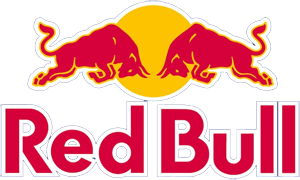Pain, Comfort, Satisfaction
Date: 8th September 2010

There are a lot of different kinds of pain, and any sane person tries to avoid most of them. It’s human nature to want to be “comfortable.” Some kinds of pain should be avoided: torn muscles, snapped tendons, relationship drama (all super damaging to training effectively and therefore to performance), but I make my best training gains when I push into areas of pain, especially mental pain, and all pain is mental…. I think embracing pain and becoming comfortable or even desiring it in training and in performance is essential to getting better as an athlete. The amount of pain someone will tolerate is directly related to the desire the person has for something on the other side of that pain. If an athlete really wants to get better then he or she will tolerate and even seek out pain.
If an athlete pushes hard in training then he or she will push hard when it’s time to do so while performing. One of the biggest benefits of lifting weights is not in the actual strength training but learning that you CAN lift the weight one more time when your head says, “No.” Yes. Twice more. I think this sort of experience teaches both mental toughness and deeper muscle recruitment, both essential to performance.
Years ago I watched one of the best rock climbers in the world climb one of his hardest routes ever at that time. He fought, bled, screamed, and left NOTHING in his attempt. He succeeded and clipped the anchor, then unclipped it and started down climbing for the training. I try to emulate his attitude when appropriate in my own training; to dig deeper, to suffer, to look through the mist at the goal, and upon getting there to shut up and keep going farther
I see some athletes (and I’ll use climbers as an example) get a little beaten down and then just give up and say, “take” or stop running back up the field or whatever. They then wonder why they’re not progressing, why they’re “training” and yet the same old level of exertion still feels hard. The reason it feels hard is that they are letting it feel hard. I’ve watched numerous athletes say, “I’m too pumped to climb,” but if their friends scream at them they’ll keep climbing, often for dozens more moves. Watch a guy on the bench lift the weight to “failure,” then see what happens when his friends start yelling at him. More reps, guaranteed. Soon the pain becomes irrelevant, it’s only upward motion that counts. That is a state of grace.
This post-pain functional state must be entered into in training to be achieved in actual performance. The mind must be conditioned to dominate discomfort, and can be. But it’s really uncomfortable in a way we don’t often have to deal with as the monkeys on top of the economic ladder…
The corollary to this is satisfaction, of thinking, “Good enough.” That’s the same as saying, “I’m comfortable with that.” If you’re comfortable then you’re not trying. The best athletes in any sport I’ve ever been involved with may win, but they’re only satisfied for a short time. In training they judge their sessions not by the number of pounds lifted, but by how much attention, focus, grit and even meaning was extracted from the training session. If they are having a strong day they aren’t happy with a “personal best,” they’re only happy when they dig deeper and give it their true best. On a rough day they don’t cry and pout when way off their best, they do the best they can with no drama or theatrics. They reach the anchor or their goal, and then start climbing down or pushing another rep because they can, and don’t let some arbitrary level of satisfaction dictate the result. The very best athletes don’t need a crowd to perform, they could be in a dead-silent cavernous gym and they’re still going to do their best.
Training like this is scary. In life we don’t generally lay it all on the line, and rarely publicly. It’s almost like making love in public or something, it’s a bare naked, all-out, intimate, no reserves display of true character if done well. The thing about doing your best is that there aren’t any excuses left to hide behind, the clothes are all gone. Many people never see what’s there, much less show it to others. The neat thing is that when you do your best it’s always fucking cool, no matter what it looks like. We’re all gonna cheer for the fat bastard struggling across the finish line ’cause we all know he’s leaving nothing behind him. Respect.
The more I train and work with other athletes the more I see a simple truth appear: It’s not how many reps that count, but how many were done after the “goal” was reached. I think one of the reasons Crossfit is effective for many people is that most workouts are done for time. There is never a “good enough” in hard training, there is only the point where the weight won’t move or you’re in the air if you’re a climber. That’s your best.
Now, a problem with all of the above is that getting injured, over-trained, and generally destroyed too often is a sure path to athletic failure. Once an athlete figures out that trying really hard in training gets performance results they often over-train and end up regressing. “Gee, I’m stronger now after training three days a week. Imagine what I could do on five days a week!” Get over trained and injured is the imminent answer. Training must be periodized to some extent or the result will always be a burned out or injured athlete. I know, I’ve done that lots, and watched numerous other athletes do the same without even knowing what was happening. There are a lot of climbers from the 90s who had to battle chronic fatigue, adrenal problems, etc. etc., let’s not repeat that experiment (I think there’s likely a correlation to continuous “met con” or power endurance or whatever anyone wants to call it programming and adrenal issues here, but I don’t know enough about how this works to figure it out, just see the results among too many people for it to be coincidence).
Failure is an easy marker to hit, but it’s often not the most effective thing to do…. A cyclist may not need to redline repeatedly on a five-hour ride, in fact doing so would be counter-productive. Balancing all these variable is what keeps sports and training interesting for me.
One more rep, one more move, break the comfort shell into a thousand sweaty pieces, do your best with no excuses.
There are a million problems with the above, but I hope it makes sense to someone other than me. My own training is never perfect; scattered, incomplete, not as much, too much, what am I training for, but I do know when I’ve done my best. Give ‘er.
Posted in: Blog
Comments
Add a comment
I'm more than happy to hear your thoughts on what I've written. Please note that all comments will be moderated before publishing. Thank you for joining the conversation.




